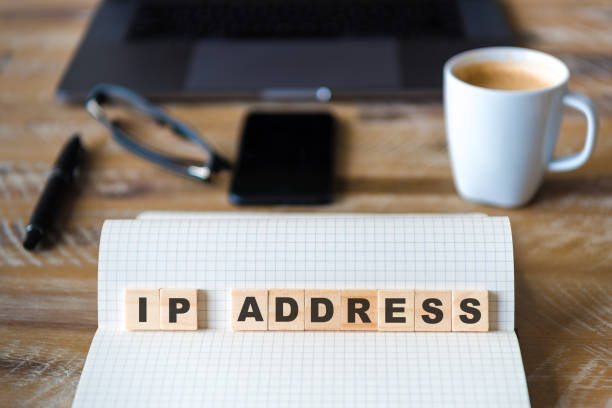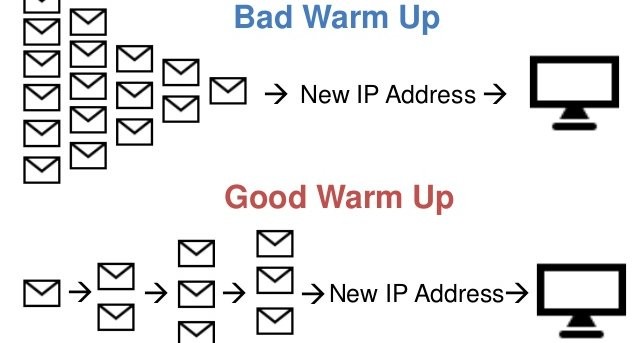Whether you are new to email marketing or already have some experience, you must have discovered by now that so many factors must be carefully considered and combined to ensure successful email delivery.
Email marketing is not complex but requires knowing what to do at every step. One of the things you must learn about is email IP and domain warmup; this is just as crucial as every other aspect of your email campaigns. This practical guide has all the details on warming up your IP and sending domain.
See also: What are Email Newsletters? How to Start One and Gain Subscribers
What is Email IP and Domain Warmup?
IP and domain warmup limits the volume of emails sent out from an IP address and domain and gradually increases the limits over time. This helps build trust between internet service providers (ISPs) and dedicated IP addresses or domains. IP warmup is also needed to prevent spam suspicion and increase deliverability.
An ISP determines which emails can be delivered and which will be sent to the spam folder or blocked. One way it does this is by monitoring bulk emails; for example, it is suspicious and spammy to suddenly send emails to 10,000 people at once.
However, as a business owner or email marketer, you can’t do without sending bulk emails, especially when you have a large audience, even after segmentation. So, you can warm up your IP address by sending smaller volumes of emails and gradually increasing them over time to build trust for your IP address.
Best Practices for IP and Domain Warmup

Don’t Rotate the IP Address
You do not need many IP addresses as a small business to run a successful email marketing campaign. Even as your business grows, do not use more IP addresses than necessary; otherwise, you will find it difficult to warm up all of them. This is more suspicious than a cold IP. Businesses do this in a bid to reduce the number of emails sent from one IP, but ISPs will catch on, and they may block all the IPs.
Use a Dedicated Email Address
Your company may have many email addresses for different departments, but your subscribers must always receive emails from an address they already know. This will help build trust with your subscribers and ISPs and give the impression that your business is reliable and consistent.
Make your Subject Lines Clear
A healthy email open rate is one factor that determines how fast you can warm up your IP and domain. So, it is good practice always to craft a captivating, concise, and honest subject line. However, do not deceive people into opening your emails; it won’t feel good when your email content doesn’t deliver on what the subject line promises.
Use Different IP Addresses for Transactional Emails
When trying to warm up your IP, use a dedicated IP address for your transactional emails; avoid using the same IP for transactional and marketing emails; it can ruin your efforts to warm up your IP because marketing emails are most often seen as spam and suspicious emails.
Monitor Your Email List
Always watch how your audience engages with your messages in different email list segments. Reengage the subscribers you are losing by sending them drip emails to the back and removing inactive email addresses from your list. This is necessary because your engagement is crucial to your IP and domain warmup.
How to Warmup an IP and Domain
To begin your IP warmup, first send emails to internal addresses like your personal accounts and people close to you, such as your company staff. Encourage them to engage the emails and take anyone sent to spam back into their inbox.
Next, you can start sending emails to your subscriber list, starting with confirmation emails and then welcome emails. You can also segment your list so your content can resonate with your subscribers.
Send smaller volumes of emails first and gradually increase the numbers with time.
Building an Email IP and Domain Warmup Schedule
First, note that the warmup schedule modelled below is designed as a suggestion only; every business is different, so you should design a schedule that suits your needs.
The number of emails you send during each step of your IP warmup depends on the total volume you intend to send, but it should be enough at enough frequency to build a good IP reputation. It also depends on whether you are warming up a new IP address or trying to improve on one that isn’t performing well.

Here is an example of an IP warmup schedule. Remember that the volume you will start with and how you increase it depends on the size of your email list.
| Day | Email volume |
| 1 | 200 |
| 2 | 500 |
| 3 | 1,000 |
| 4 | 1,500 |
| 5 | 2,000 |
| 6 | 3,000 |
| 7 | 5,000 |
| 8 | 10,000 |
| 9 | 15,000 |
| 10 | 20,000 |
See also: What is Email Blast? How it Works, How to Do it Right, and FAQs
Email IP and domain warmup are crucial to creating and maintaining a good IP reputation and ensuring the success of your campaign. Although an IP warmup may take time, you will certainly see good results, and it is worth it.
In addition, using a reputable email marketing service provider like Segnivo will make things a lot easier for you with the best IP warmup strategies. Segnivo can make it easy to set up your email campaigns even as a newbie and monitor your IP by providing detailed reporting on your email engagement and IP reputation.
FAQs
What is an IP Address?
An IP address is a unique set of numbers assigned to a device on the Internet. IP stands for Internet Protocol, and an IP address serves as a means of identification and location addressing when using Internet Protocol for communication. In this case, the communication is done via email.
What is an Email Domain?
An email domain is the part of an email address after the @ symbol. It is the unique identifier of an email account and functions like a virtual street name, ensuring emails get to their destination.
During communication over the Internet, people use domain names to identify devices, but computers use IP addresses to identify devices, so when you warm up your IP address, you also warm up your domain.
Should you Warm up a Shared IP Address?
A shared IP address may not need to be warmed up. This may be seen as an advantage, but the actions of the other users of that IP can negatively impact your domain reputation. So, consider warming up your domain.